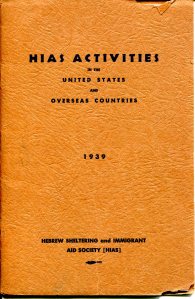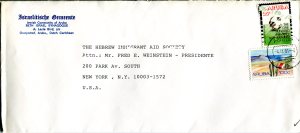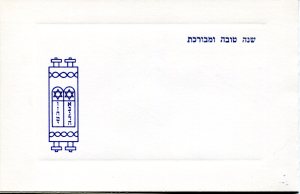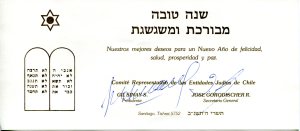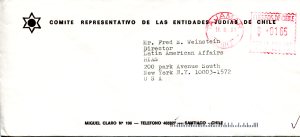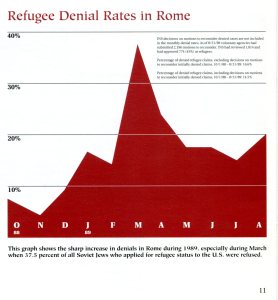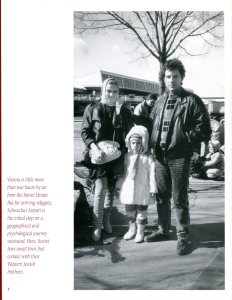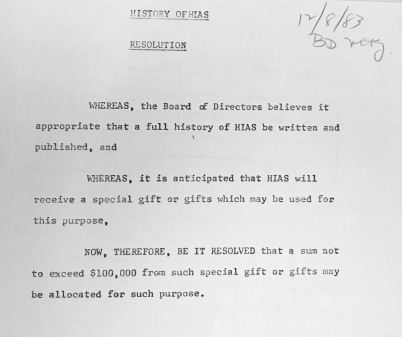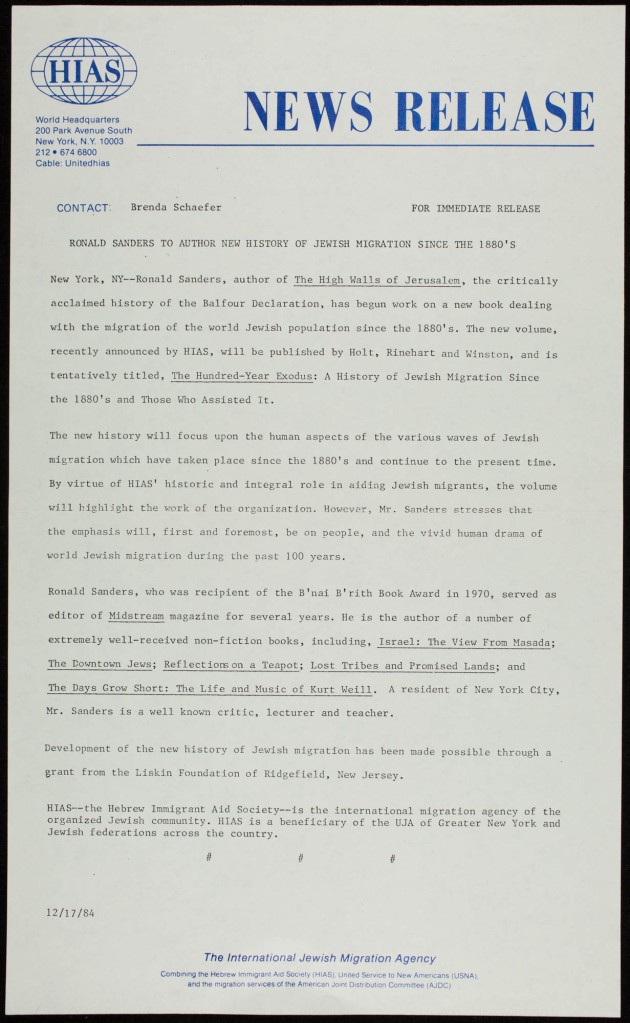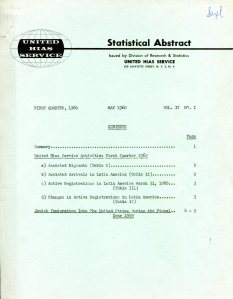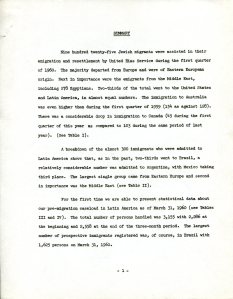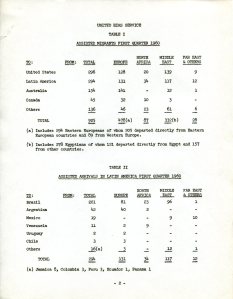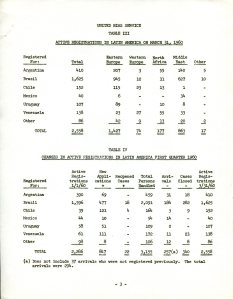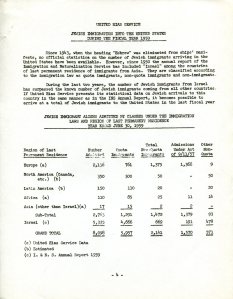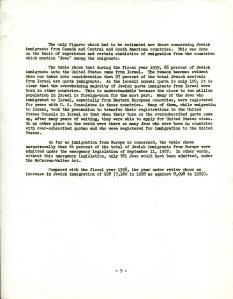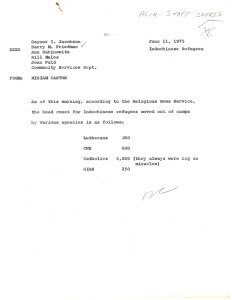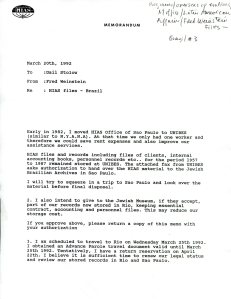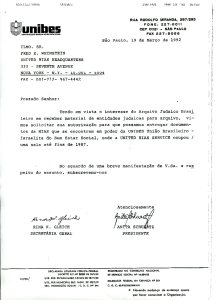We are happy to announce that the finding aid for the records of HIAS (I-363) is finally online and ready to use! After three years of surveying, organizing, rehousing, and encoding, the American Jewish Historical Society and the Center for Jewish History are proud to present a processed collection of documents, photographs, and audio/visual materials representing nearly 100 years of exceptional HIAS service.
The HIAS records are split up into nine series, each representing a facet of HIAS’ administrative work in rescuing, resettling, and caring for refugees from all over the globe.
Series I: Executive
Series II: Programs
Series III: Communications
Series IV: Development
Series V: Government Relations
Series VI: Finance
Series VII: Administration
Series VIII: Artifacts, Audiovisual Materials and Photographs
Series IX: HIAS Photograph Collection
Using the Finding Aid
Just as a book jacket summarizes the key parts of the story inside, a finding aid illuminates the personalities, themes, historical significance, and file types within an archival collection. The HIAS finding aid in particular contains pertinent histories of the organization, notes on how the archivists organized the materials, and how those materials relate to the overall successes of the organization.
The finding aid for the HIAS collection is available to view online HERE.
Requesting Materials for Research
Due to the size of the collection (over 700 linear feet), the majority of the HIAS Records are stored off-site. After requesting materials through the finding aid, please allow at least 2 business days for us to arrange a delivery.
All research is done on-site in the Lillian Goldman Reading Room at the Center for Jewish History.
If you have any questions about how to use the finding aid or how to request materials, please contact the AJHS Reference Archivist by emailing reference@ajhs.org.
HIAS Photograph Collection
The HIAS Photograph Collection documents the history of HIAS’ promotional, administrative, and community work, primarily from the 1940s to the 1990s. Many of these photographs were used in HIAS publications such as annual reports, project pamphlets, and general newsletters to promote the work of the organization. Along with the organization’s official photographs are images of HIAS’ collaboration with various affiliate organizations, including HIAS-ICE Emigration Association (HICEM), National Refugee Service (NRS), and United Service for New Americans (USNA), among others.
The HIAS Photograph Collection has been digitized and can be found HERE.
HIAS Client Database
HIAS maintains an extensive archive of client file cards. As part of this processing project, AJHS created a searchable database for viewing select information from the cards of individuals that were helped by HIAS between 1955 and 2000. Because of privacy issues, access to the entirety of these cards is carefully restricted.
If you would like to see a specific file card or specific card data not included in the AJHS search, please contact the Location Department at HIAS for their policies on complete client file access.
The AJHS HIAS Client Database can be found HERE.
ADDITIONAL LINKS
The American Jewish Historical Society is dedicated to preserving the archival history of the American Jewish experience. Please use these links below to become better acquainted with HIAS, our AJHS archivists, and to learn more about the publications and collections related to Jewish immigration.
HIAS, their history, and their mission:
HIAS’ organizational website
AJHS HIAS Timeline
The process of bringing the HIAS records to life:
Day 1 of OntheRescueFront
Additional Readings and Archival Collections
AJHS HIAS Bibliography and Related Collections list



